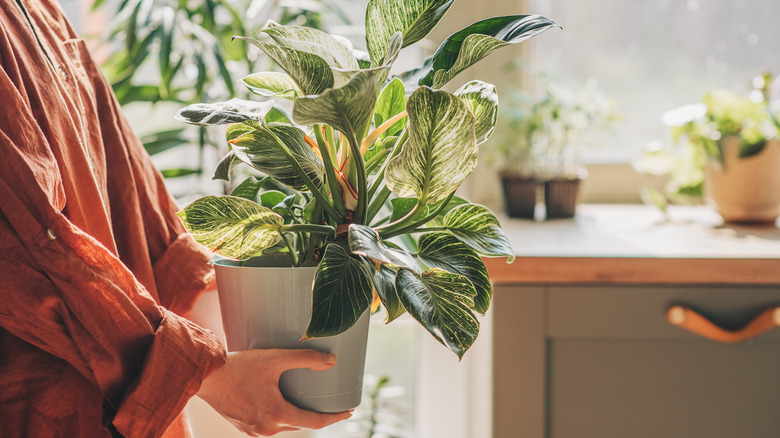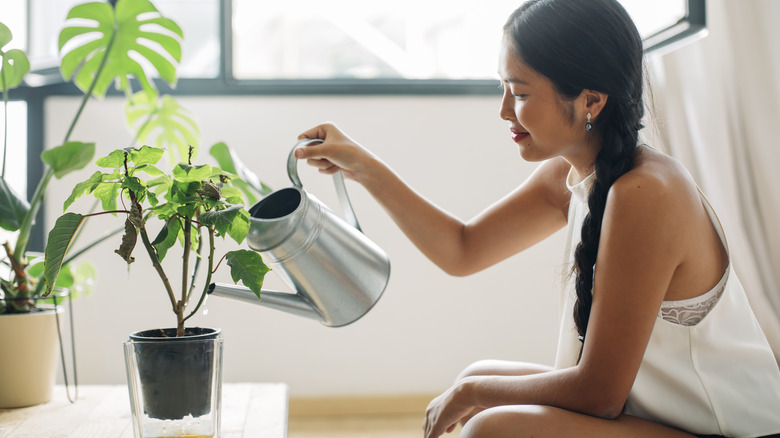Avoid Making A Mess While Watering Your Houseplants With These Tools
There's a reason some people refer to their plants as babies — taking care of them can feel like an extra job sometimes, and by far the most frequent plant chore is watering. Even the hardiest houseplants can die if deprived of water for too long, and the more plants you have, the more work that watering becomes. If you're tired of splashes and overflows, you can avoid making a mess while watering your indoor plants by using tools like narrow-spouted watering cans, moisture meters, and deep saucers.
Each of these tools serves an important purpose for avoiding mess, and they can also prevent moisture-related damage to your flooring or furniture. Additionally, they help keep your plants healthy by making it easier to provide them with just the right amount of water. Narrow-spouted watering cans, for example, are a major step up from regular pitchers, cups, or bottles. They don't drip as you pour, they produce a gradual flow of water, and they allow you to aim the flow exactly where you want it. In most cases, this will mean directing the water to the soil rather than hovering over the entire plant. This also prevents splashback out of the container. Similar benefits are true for other watering tools.
Why saucers and moisture meters are key
Healthy plants need pots with drainage holes so they don't become waterlogged, but these holes are the main source of potential messes — all that water needs to go somewhere. The solution for mess-free watering is a saucer to go underneath each plant pot; without these, plants will drip directly onto the floor. Select a saucer that matches the size of the planter, is relatively deep, and has a lip around the edges. Other saucers may overflow more easily, and if you have to empty excess water, there's a greater risk of splashes. You may also want to put a mat underneath the saucers if you notice condensation buildup.
Another common alternative is to put each planter into a larger, secondary pot that has no holes; this will catch drainage with no risk of overflow and is easy to dump without a mess. You can also place your plants over a sink, bathtub, or even portable bucket while watering to catch the initial drainage, then put them back into a saucer or pot to catch stray drips.
Knowing exactly when and how much to water is also helpful for avoiding messes while keeping plants healthy. A moisture meter tells you when the soil is dry and allows you to avoid guesswork or sticking your finger into the soil. For some plants, it may be worth investing in self-watering planters, which allow the plant to absorb as much water as it needs. By not watering by hand, you can lower the risk of any mess, and these systems also allow you to keep your houseplants watered while you're away.

